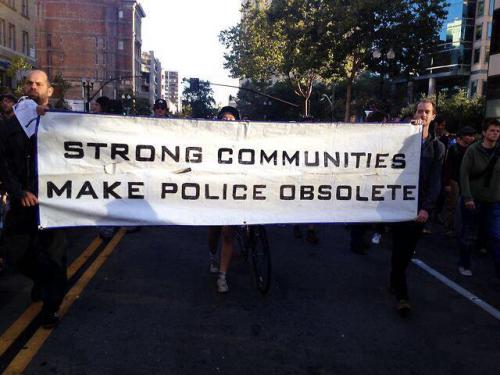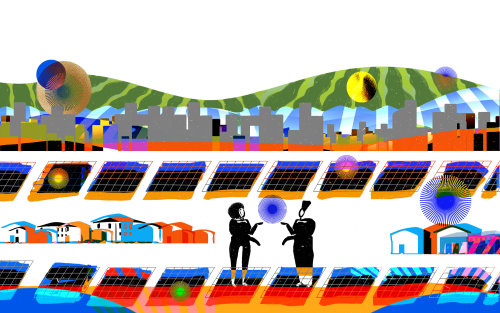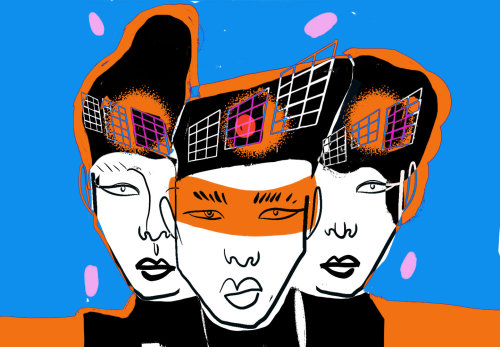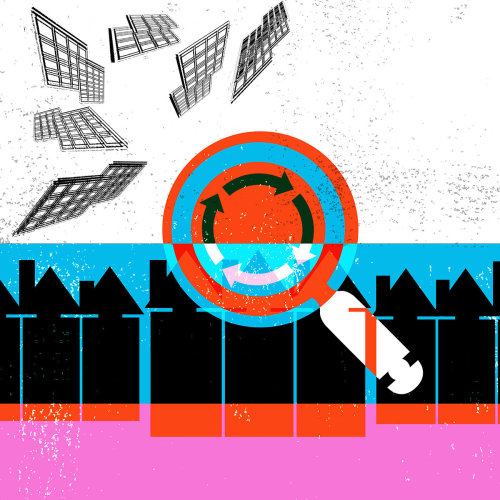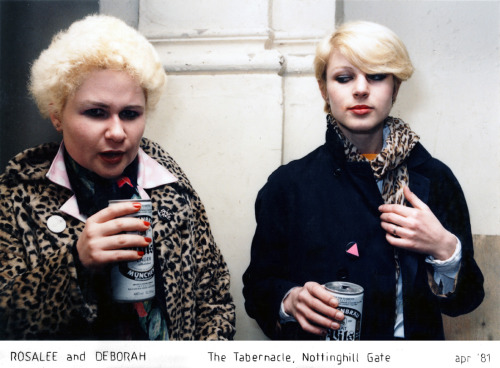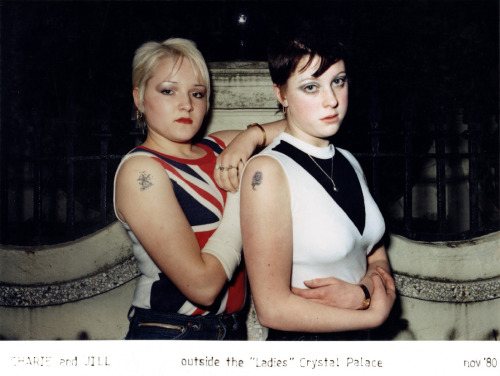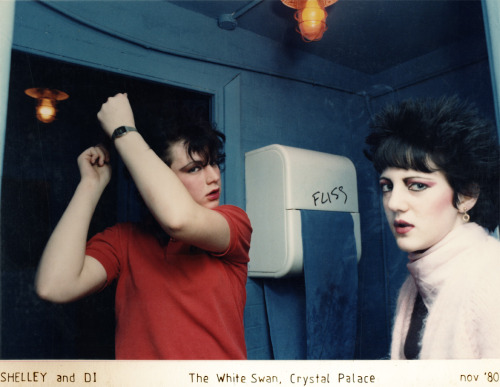#communities
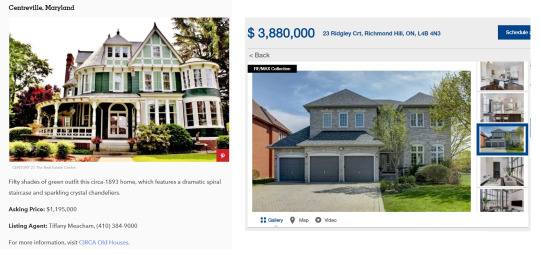
I just found two different listing on the internet as I was making market research for my essay on suburban spaces, writing about house prices and quality. My broad web search led me to find two architecture realities that demonstrate how the real estate landscape is odd and sometimes on steroids.
The house on the left is a beautiful Victorian home located in Maryland in the US, the asking price is US $1.19 million, while the one on the right is a McMansion outside Toronto going for CDN $3.8 million. What’s going on here?
The Canadian housing market is gone crazy with prices that aren’t stopping soaring not even through the crisis between 2007 and 2008. Toronto Listings are filled with small 2 bedrooms 1 bathroom going for 600k at least for homes built forty years ago.
Off course the two locations are geographically different and housing markets might follow alternative priorities; however, it’s shocking seeing how much value some new homes have reached despite their bland style and cheap construction material.

This other listing featured another beautiful home in Seattle with lake view and compared to the above house outside Toronto it still cheaper by $1 million and change. Despite the styles, this Victorian house has been built with far better quality than any multi-million dollar mansion in 2017, and it has retained its aesthetic value for over a century while newer homes won’t last fifty years.
Communities outside the city built with the principle of traditional craftsmanship in the 18th and early 20th century have contributed in making the urban landscape better looking. Essentially they make neighbors vibrant, original, and worth caring about. Today, instead, we face the sad reality of cookie-cutter homes built left and right non-stop with the cheapest materials which are too expensive and out of the reach of consumers and add no particular values to communities.

When you think of the word ‘Home’ the brain takes two paths according where you are from and how the architectural environment around shaped your upbringing. There are important difference on how we define Home and what it represents for many.
Having living in Canada and exploring the meaning of urban life in the continent including the US, I understood the social blueprints that crates a familiar environment worth of being called Home. However, there are differences that have to be analyzed so we can better understand the built environment.
Ask an immigrant from Europe or Middle-East what home means and then do the same with someone born in North America. It will be surprising to see how the former defines Home the village they came from, while the latter will answer pointing out their home property.
Why this?- Home is not just the physical structure you spend most of your life in, it’s the domain you grew up and experienced many of the important episodes that allowed you to mature, it’s the beyond of the four walls with surrounding and those living around. And here is where we can highlight how the urban design comes to play.
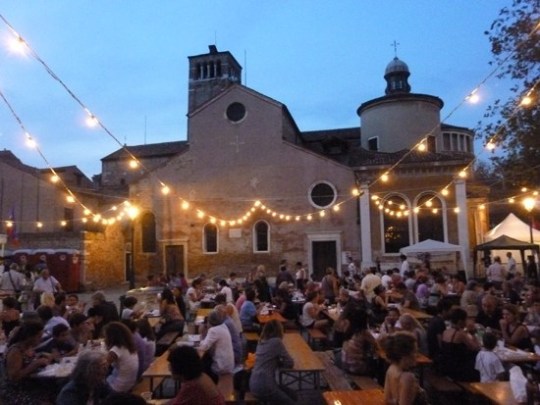
Town fairs have been the best method of bonding for people with their neighbors.
Those born in the Old Continent can recall how their upbringing did not just involved their home property, but everything that crafted and contributed individual to network their life with their nearby environment. Neighbors, the local park, the bakery around the corner, the short walk to school, the fast bike rides across streets, and so on.
All of that represents an intense web of experiences fundamental to master their own territory and limitations. Also, the organic urban design layout made it possible for people to easily remember where locations are and what best path to take. Home for many is their village and their community with familiar places and friendly faces.
On the other side we have a North American architecture of regions where its people call home their very own property, especially suburban families that make up the majority of households. Millions of citizens are dependent upon technology in order to exit their realm. Whether in the form of cars to reach the supermarket or other people, or via electronic gadgets to seek the opinion of others.
Low-residential homes in the shape of tract housing are and feel artificial, they bare no signature of their owners or their community. Roads and intersections are perfectly square made for mechanical solutions like the car. Each house on the subdivision looks just like the next one: same roof line, same garage door, same windows, same driveway, same builder.

Gated communities isolate households from being synchronized with the rest of the urban fabric.
This has been devoiding individuals of the meaning of home. Even if those living in the suburb can claim their gated community is their home, they are quick to forget they cannot leave unless they have a car and those walking around are stopped by security because they might not belong there.
In the suburbs of North America we have seen how generations became alienated from their neighbors because the architectural environment sets physical walls. This is preventing individuals to socialize among each others despite living feet apart.
Home is an experience crafted by the collection of places and social interactions. People need to physically connect so they can share tales for the bonding to happen, so each and one of them connects understanding their human habitat.
Jennifer Keil had an opportunity to showcase her ongoing historical projects to the Orange County Historical Commissioners which is in partnership with @OCParks. The theme of her presentation was #Curating #Communities.
Participate in The Orange County Historical Commission 2nd annual public event at Irvine Ranch Historic Park on Saturday April 13, 2019 from 10:00am-2:00pm
Read more at 70degrees.org/oc-historical-commissioners.
#fieldnotes #fbf #flashbackfriday #70degrees #archive #preserve #exhibit #historian #OC #California #CA #Irvine #ranch #historical #curate #womenshistory #womenshistorymonth #ranching #horse #cattle #sheep (at Irvine Ranch History Park)
https://www.instagram.com/p/BvmPzFlAthz/?utm_source=ig_tumblr_share&igshid=1l9ovt3e07ukw
Post link
i absolutely agree that the nuclear family oppresses women, and that it’s just not reasonable for two people (and let’s be real it’s almost always the mom) to raise children on their own without any outside support. and yes it takes a village to raise a child, etc….
but i also don’t think that women who choose not to have children should be expected to help raise someone else’s child. I’ve seen it way too often where childfree women are routinely saddled with babysitting their friend’s/sibling’s/cousin’s children because they don’t have children of their own and therefore “have the time.” it’s really, ridiculously common for childfree women to be expected to provide free childcare because “it takes a village!!” normally I avoid reddit but there are so. many. stories. on r/childfree from women who have had their friend’s or family member’s kids dumped on them and who just get ignored when they say they don’t want to or can’t take care of them.
i think it just goes to show that even the women who have made it enduringly clear that they do not want to be involved with raising a child are still expected to perform motherhood—are still expected to fulfill that role, whether it’s their kid or not. even if you’re childfree, you’re expected to be the cool auntie, or the friend who is always willing to babysit. yeah, it takes a village to raise a child, but not all women want to be a part of that village. many women want absolutely nothing at all to do with children. and expecting your female friends and family members to instantly take up the motherhood mantle whenever you need them to… tips pretty damn quickly into old-fashioned misogyny.
Website Rebranding | Groundswell: Community Power (2021)
illustrations I made for Groundswell’s website rebranding : Groundswell is a 501c3 nonprofit that serves local U.S communities by developing solar projects and resilience hubs; helping neighbours share power; reducing energy burdens through efficiency; connecting clean energy supply chains to local economic development; and leading pioneering research to help light the way to affordable energy. Through their work, they are building clean energy futures that reflect the beautiful diversity of the communities they serve.
By Ngadi Smart: Instagram
Post link
In 1980, photographer Anita Corbin decided to turn her lens on the young women of UK subcultures. Over the next two years, rockabillies, mods, goths, rude girls, skinheads, rastas and more posed for Corbin and opened up about what it was like to be a young woman navigating an alt scene, and the importance of female friendships.
“I have chosen to focus on girls, not because the boys (where present) were any less stylish, but because girls in “subcultures” have been largely ignored or when referred to, only as male appendages.” -Anita Corbin, photographer, “Visible Girls”
Listen to our interview with Corbin and learn what happened when Corbin and her portrait subjects reunited earlier this year.
Are you a woman in a subculture? Do you feel welcome? What role do female friendships play in your scene of choice?
Post link
I feel like making this statement: blood bonds mean close to nothing to me. Chosen families are what I care for. I handpick my relatives, brothers, sisters, partners and lovers, and I consider it a huge deal when they choose me. Why yes, the keyword here is choice, choosing, being free from traditions and free of creating your own paradigms.
So yeah, I love my family so much.
This was posted online last year, but I never got round to posting it here.
Empowering Change: Towards a Definition of the Activist Museum
“The potential for activist museums lies in museums acknowledging and harnessing the role they play in shaping society. If museums can inspire action in their visitors to become more active citizens, more engaged in their communities, more involved in democracy at the local, regional and national level, more informed about how their everyday actions can affect real change and empowered to make change happen, the more relevant museums will be.”
You can read my full article on Museum-ID by clicking the link.
Post link

